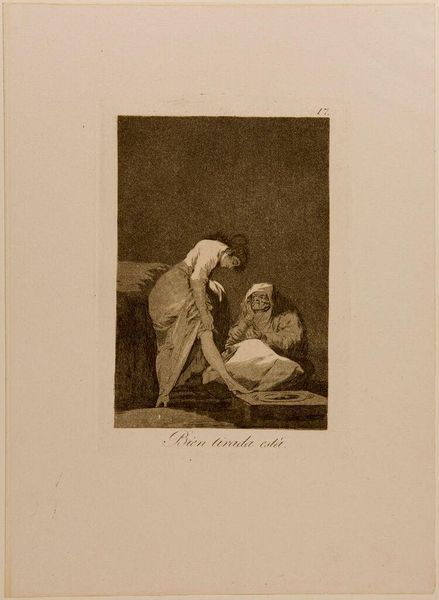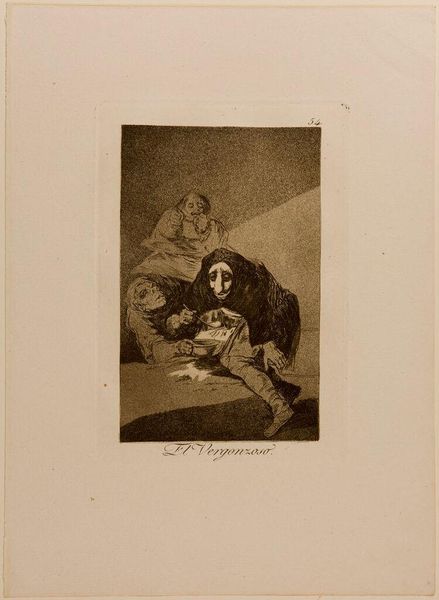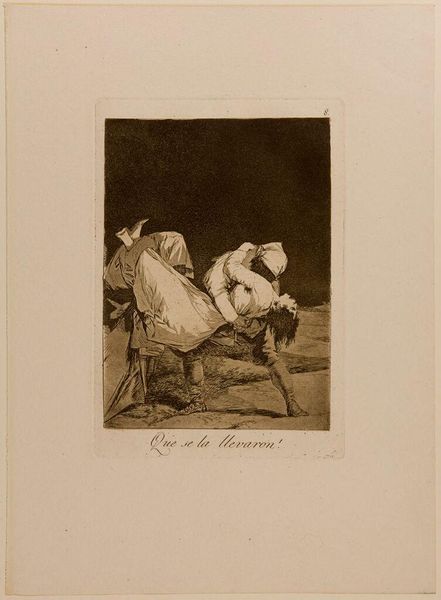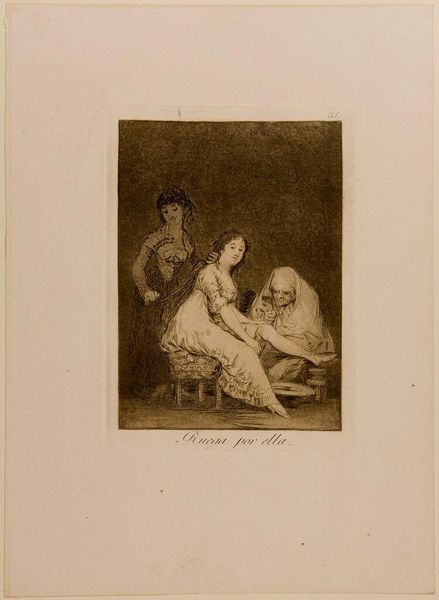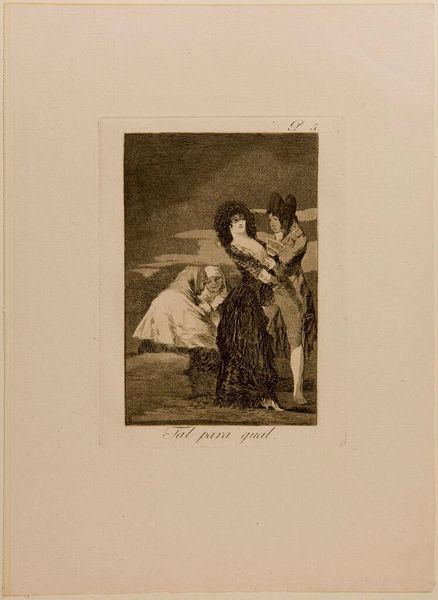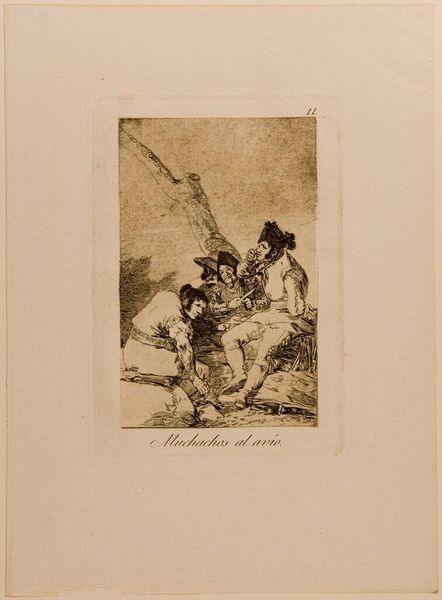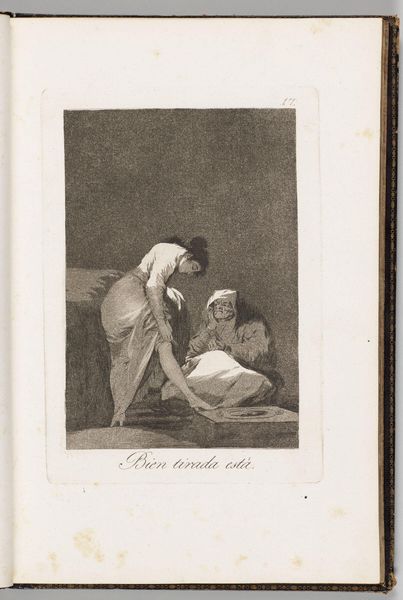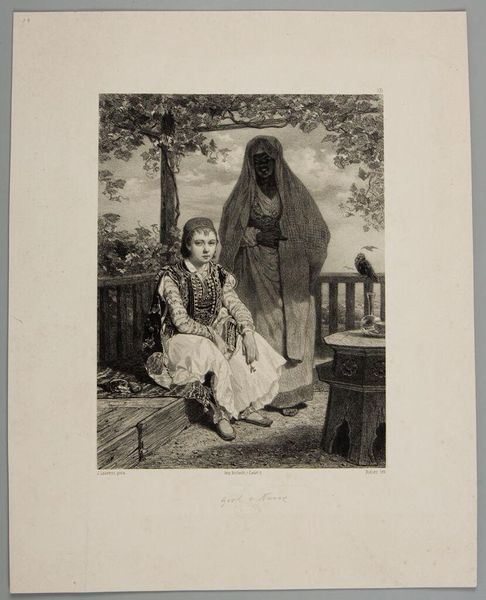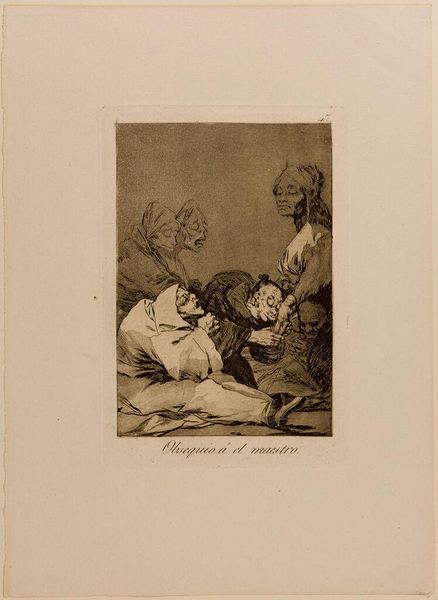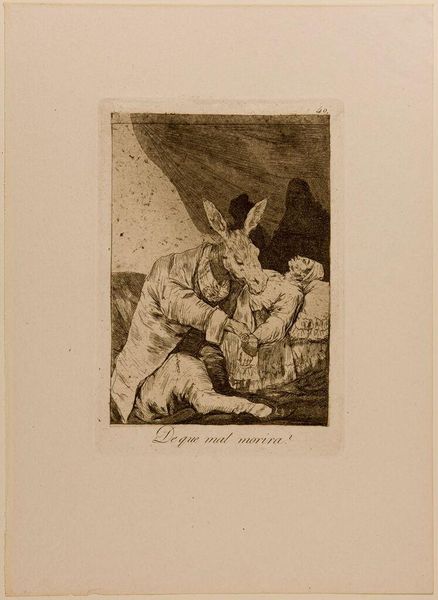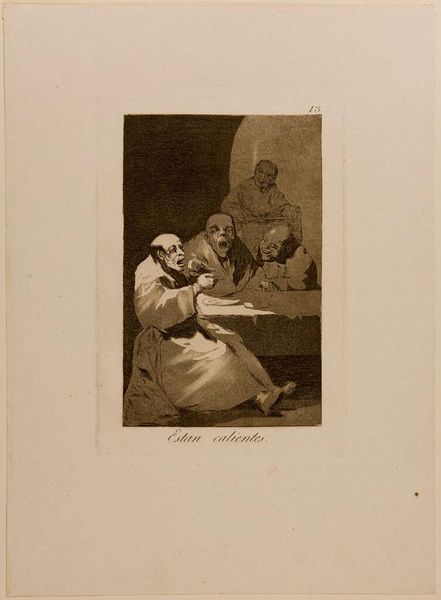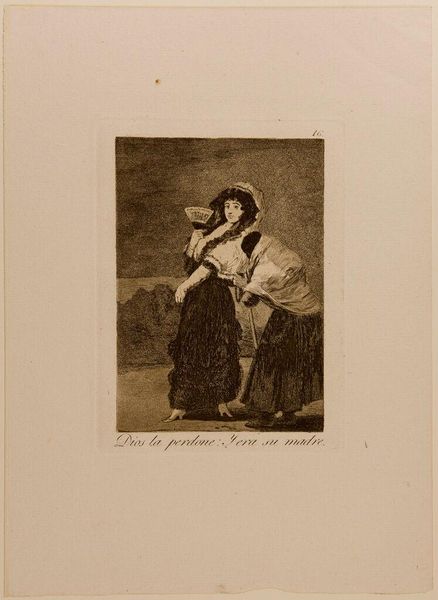
Dimensions: Platemark: 21.6 x 15.1 cm (8 1/2 x 5 15/16 in.) Sheet: 35.3 x 25.6 cm (13 7/8 x 10 1/16 in.)
Copyright: CC0 1.0
Curator: This etching by Francisco Goya, titled "Here Comes the Bogie-Man," presents an unsettling scene. What's your initial impression? Editor: Stark. The high contrast between the shadowy figure and the terrified family creates a mood of intense dread. Compositionally, the bogeyman dominates the scene. Curator: Goya was deeply critical of the social and political landscape of his time. "El Coco" was a cautionary figure used to frighten children into obedience. Editor: The aquatint technique gives depth to the shadows, really emphasizing the figure's ominous presence. The distortion of form is also key here. Curator: Absolutely. Goya uses this imagery to comment on the use of fear as a tool for social control. The church and state used similar methods. Editor: And the figures' gestures! The mother shielding her children, their wide eyes... it’s a masterclass in portraying raw emotion. Curator: Indeed, it's a powerful indictment of societal manipulation. Editor: The formal elements and the subject matter merge to convey a feeling of helplessness. Curator: A fitting end to Goya's potent social critique. Editor: Art as a mirror reflecting the dark corners of our world.
Comments
No comments
Be the first to comment and join the conversation on the ultimate creative platform.
